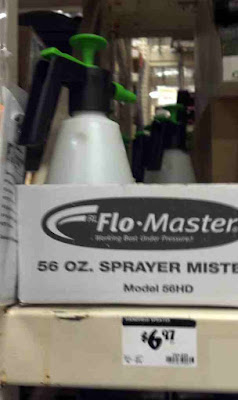I wish I knew what fool originally decided that St. Augustine would be a good lawn grass for greater Houston. Wiki describes it as "a medium to high maintenance grass that forms a thick, carpetlike lawn, crowding out most weeds and other grasses".
They got the "medium to high maintenance" part correct, at least. Most people would argue the "crowding out" part, as it allows plenty of weeds.
We had a little weather pattern recently that may have gone unnoticed to you at the time, but which had dire lawn consequences.
 |
| Screengrab from Station MD6282 (APRSWXNET) which is a weather station that someone here in Centerpointe is actively running. http://www.wunderground.com/cgi-bin/findweather/getForecast?query=77573&sp=MD6282 |
What happens is that these types of rain patterns can conspire to create good reproductive conditions for these:
 |
| Houston's definition of Lawn Hell. Who knew that St. Augustine is considered to be a "cereal grass"? |
 |
| Courtesy of http://floridaturf.com/chinch/index.html |
 |
| Apparently my high maintenance was not high enough. Somebody shoot me. |
I'm a big fan of the "lawn alternatives" that are currently all the rage, especially after last year's drought. This movement has been popularized in part by Austin landscape guru Pam Penick (if you have time to kill, surf through her blog, because her photos are so beautiful that they are worth seeing even if you're not that interested in gardening... she won About.com's "Best Garden Blog" award recently and she's also got a book coming out called "Lawn Gone!" which is available for pre-order on Amazon).
 |
| Here's a random example of a lawnless front yard from the California Native Plant Society webpage. Basically you replace your grass with low-maintenance shrubs, trees, flowers, rocks, mulch beds, rock beds, courtyards, etc. |
- $25.00 every week or ten days if you're paying for mowing; cost of your own time, gasoline, and equipment if you're doing it yourself.
- $100.00 per month to water just the front yard during the summer season, if you want to keep it healthy and free of chinch bugs (I was shocked to see our water bill being about $150 per month last year during the months and months of drought, but one of our neighbors said his was exactly the same - and it was mostly because of the front lawn watering that we were both doing).
- Cost of fertilizer.
- Cost of treating chinch bugs regularly.
- Cost of treating fungus.
- Cost of replacing sod patches when portions inevitably die.
But back to my chinch bug story. My husband (a consummate native Houstonian with little tolerance for lawn pests) experienced a minor melt-down and wanted to bomb the hell out of them with pyrethroids.
Centerpointethemovie? It tells the tale:
Our soil is probably fairly close to being virgin because of this history (as close as much of anything gets on the upper Texas coast, anyway). Once virginity is lost, it's lost forever. I don't want to use synthetic organic chemicals on our property unless it is first proven that I clearly have no choice but to proceed with that approach.
So the other night I started the the organic onslaught instead:
 |
| STEP 1: Diatomaceous earth, a natural product. Look low down on the shelves in Home Depot if you're buying it there. |
 |
| Look for this symbol on the products you use, when judging whether they are suitable for organic applications. |
 |
| Sprinkle it ALL OVER the lawn - not just in the damaged parts. Sort of brush it down toward the root zone with your hands, feet, or a broom. Chinch bugs hang out near the roots. |
 |
| Oops. Diatomaceous Earth is very powdery by design. You're going to get it all over yourself as you spread it, unless you use some kind of protective measures. |
 |
| Labeling is king. Label it so no other chemicals will get put into it by mistake. |
The other substance that chinch bugs do not like is WATER. June's rains will help keep them in check, but unfortunately for us, damage had already been done by the time the rains returned. If you routinely soak your lawn, you will also greatly discourage chinch bugs. But of course, soaking costs a lot of money, too.
I'll report back on how effective this organic approach turns out to be, this expensive and time-consuming effort spent on the lawn that'll hopefully be mostly ripped out in a few more months (but we need something to keep covering the ground between now and then, obviously).
:-)




No comments:
Post a Comment
I'm forced to moderate comments because the spammers have become too much for me to keep up with. If you have a legitimate comment, I will post it promptly. Sorry for the inconvenience.